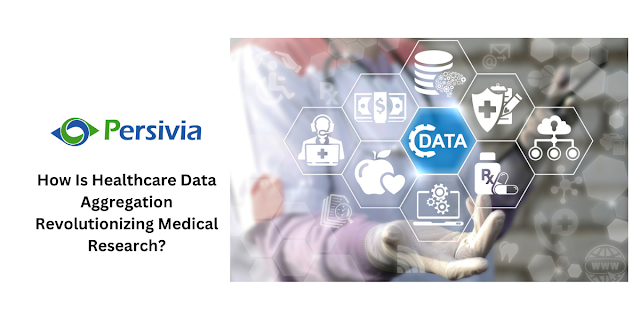Bridging the Gap-How Data Aggregation is Transforming Healthcare Delivery?
Healthcare delivery is undergoing a significant alteration with the preamble of avant-garde technologies. As healthcare organizations strive to provide the best care possible, they are leveraging the power of Data Aggregation to bridge the gap between disparate sources of information, giving providers a more comprehensive view of their patient’s health.
This platform bridges gaps
between different sources of healthcare data such as electronic health records
(EHRs), billing systems, and various other sources to better understand the
needs of their patients as well as detect patterns and trends quickly across a
wide range of data sets.
Turning Information into
Action with Healthcare Data Aggregation
Healthcare Data
Aggregation is a growing field that
has emerged in recent years as a way to improve healthcare outcomes. It
involves the collection, integration, analysis, and reporting of medical
information from multiple sources to create insights that can be used to drive
better decision-making. By gathering and analyzing large volumes of healthcare
data from disparate sources, health systems are able to gain valuable insights
about their patients and the care they receive.
Data Aggregation in
Healthcare provides healthcare
providers with a comprehensive view of patient population health by allowing
them to identify trends in areas such as chronic conditions, medication
adherence, or treatment compliance. Through this process, organizations are
able to uncover patterns that can be leveraged for improved clinical operations
and patient outcomes. Additionally, data consolidation enables predictive
analytics which helps organizations anticipate future events or outcomes based
on current trends.
Harnessing the Benefits
of Data Aggregation In Healthcare
·
The ability to
collect and store medical information is invaluable, providing both an
efficient method of communication between healthcare providers and the
potential for great advances in medicine through the analysis of collected
data.
·
The primary benefit
of data consolidation is improved patient care. By collecting data from
multiple sources, such as electronic health records, diagnostic systems, and
laboratory results, physicians can gain a more complete understanding of their
patient’s health and make informed treatment decisions.
·
By aggregating
clinical information from various areas, researchers can identify trends across
populations which can help inform best practices.
·
Furthermore, it
improves cost-effectiveness for healthcare providers.
Conclusion
Lastly, as we move forward
into the digital age, healthcare providers need to remain abreast of new Data
Aggregation technologies that have the potential to revolutionize healthcare
delivery. We must continue to strive for solutions that maximize healthcare
benefits while minimizing risks.




Comments
Post a Comment